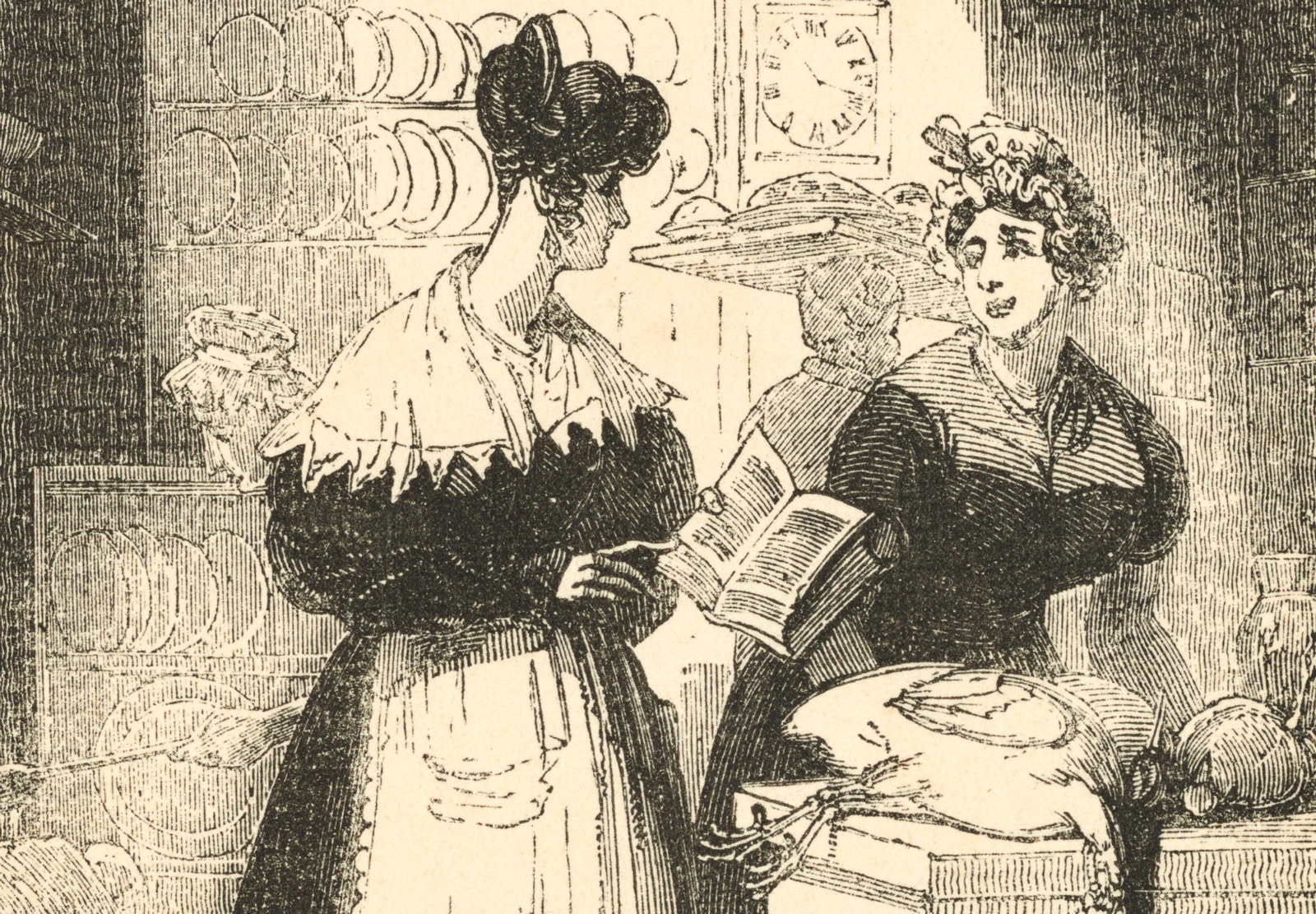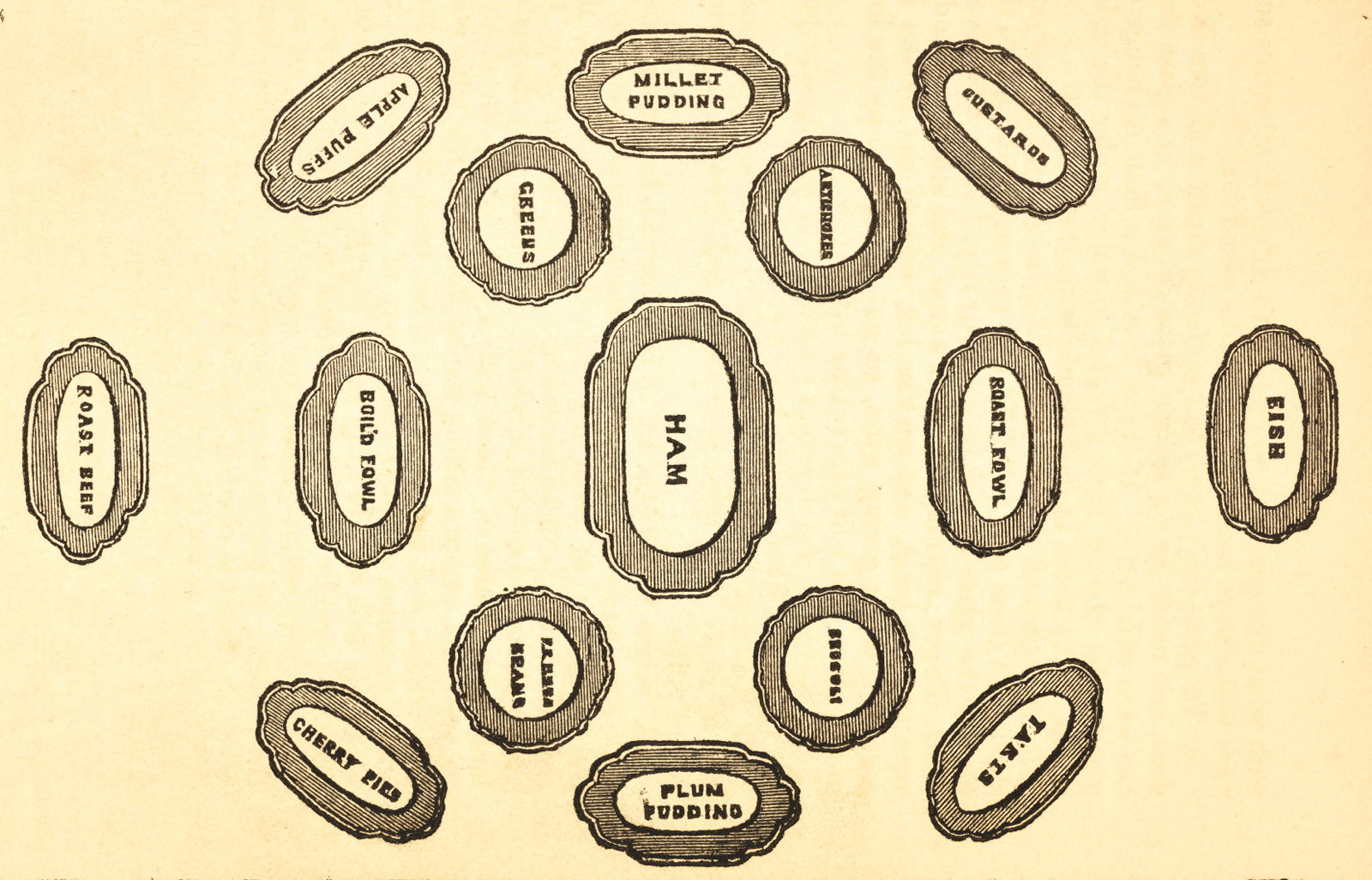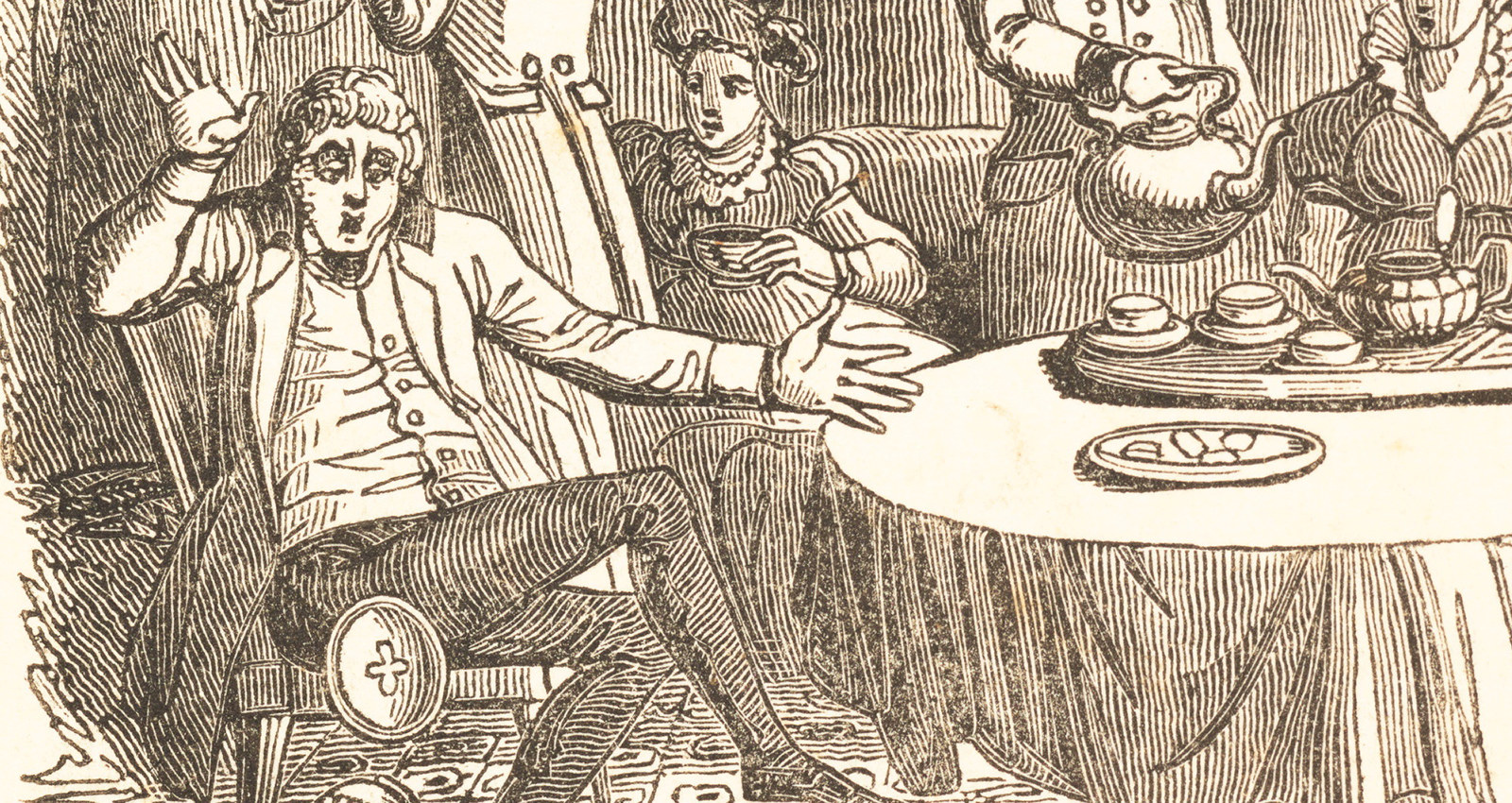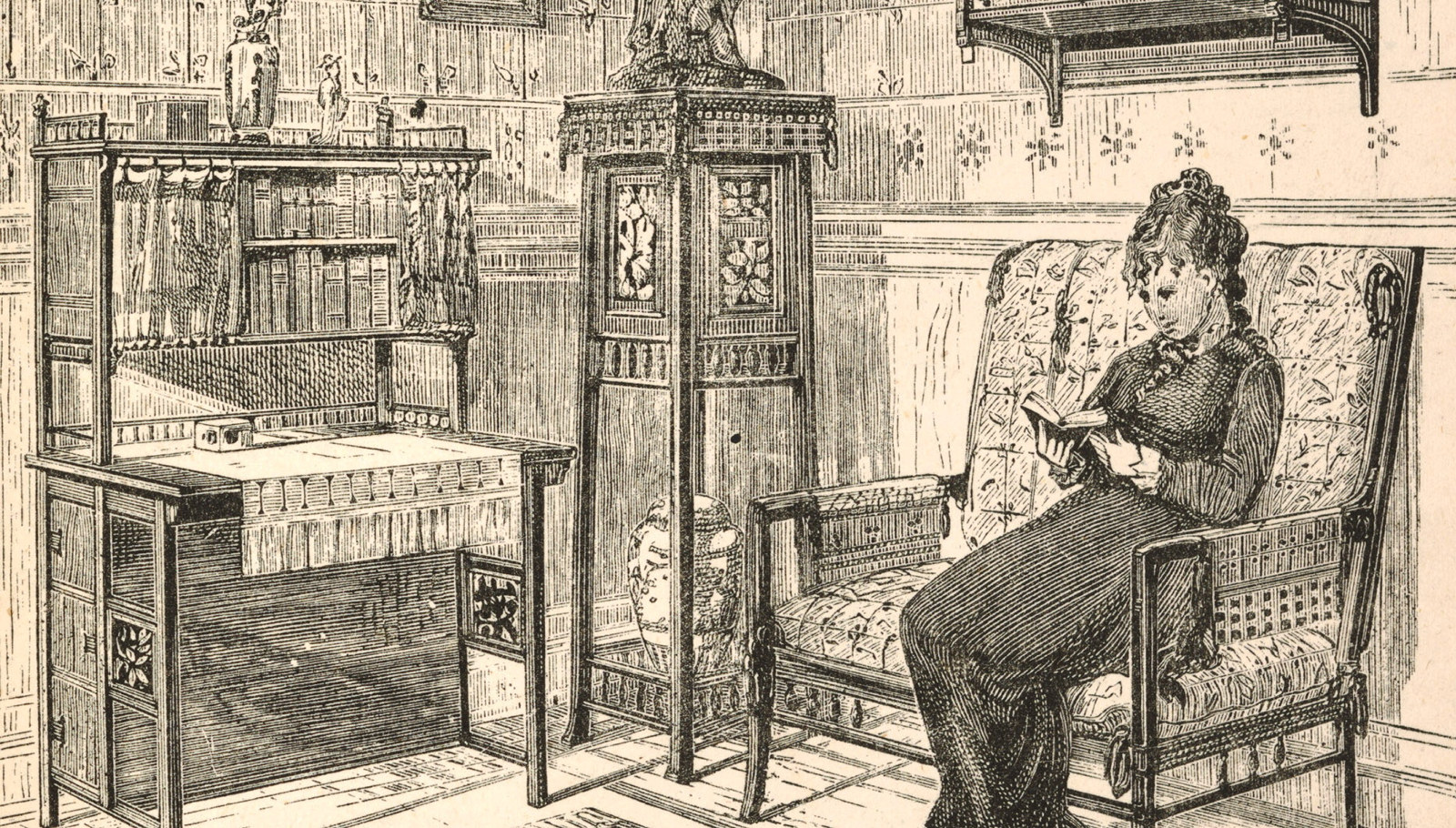Eat, pray, decorate
Advice manuals – the self-help books of the 19th century – provide a rich source of information about domestic and social life in the era.
One of the strengths of the Caroline Simpson Library & Research Collection is its holdings of 19th‑century domestic advice manuals. Most of these books were published in the United Kingdom, with some from the United States and Australia. A number of the titles are now very rare; in some cases the library retains the only known copy in a public collection. The category covers subjects such as household management, domestic service, decorating and etiquette, and offers great insight into social and material histories of the home.
The role of the domestic advice manual was to educate and provide guidance. Manuals were prescriptive in nature: they promoted popular notions of taste and culture and maintained those of class, gender, duty and morality. Publishers catered to the growing market of middle-class readers preoccupied with ideas of ‘betterment’, releasing a myriad of books targeting a wide range of topics and audiences.
Commanding housewives
In the field of household management, readership chiefly comprised young married women. Manuals informed the ‘housewife’ on a woman’s role in the domestic sphere: how to be domestically capable, make a comfortable home and live within one’s means. English author Isabella Beeton imparted expertise on matters from appropriate behaviour and dress of ‘the mistress’ to management of household expenses and personnel. Her widely read How to manage house & servants (1866) declares stirringly:
‘as it is with the commander of an army, or the leader of an enterprise, so it is with the mistress of the house’.1
Home decorating advice had traditionally been written by and for married men. By the late 19th century, a new ethos of domesticity saw home decoration as the domain of women, and this was accompanied by a growth in female authorship. The 12-volume Art at Home series (1876–83) provided guidance and instruction on decorating ‘artistically’ to those who couldn’t afford to employ ‘skilled decorators’. In The dining room (1878), Mrs Loftie gave ‘practical suggestions to inexperienced housekeepers on small income, who do not wish to make limited means an excuse for disorder and ugliness’.2
Industrious servants
One of the most notable Australian publications in the collection was written by Lady Eliza Darling. Simple rules for the guidance of persons in humble life: more particularly for young girls going out to service was first released in 1834, and is dedicated to ‘The children educated in the Female School of Industry, Sydney, New South Wales’. Lady Darling was patron of the committee who founded the school. Its intention was to produce ‘industrious servants’ who could eventually become ‘virtuous wives and mothers’.3
The collection also retains manuals from the extremely rare Houlston’s Guide to Service and Guide to Trade series. The 34-volume combined series were first released in 1838 to provide instruction on the duties of indoor and outdoor servants. Publisher Charles Knight engaged social theorist Harriet Martineau to write manuals for the series such as The housemaid and The lady’s maid.
P’s and q’s
Some of the smallest handbooks in the collection are etiquette manuals. These pocket-sized volumes cover topics from letter writing to ballroom dancing and finding a spouse. In spite of its title, the 1847 Young ladies’ and gentlemen’s hymeneal instructor, by Edward Caswall or ‘Quiz’, was primarily aimed at young men. Chapters include ‘showing the time to marry’, ‘the requisites of a good wife’, ‘manner of courting’, ‘popping the question’, ‘the wedding night’ and ‘conjugal duties’.
Most manuals were written as serious instructional handbooks, but others took the form of satirical exposés of high society. Authorship could be by ‘one of the exclusives’ or ‘A Lady’. In Mixing in society (1870), ‘the Countess of …’ asserts that ‘a standard work on manners must necessarily proceed from pen of one who moves in the best circles …’4
The forerunners of modern-day self-help books and home magazines, 19th-century advice manuals gave the aspirational a means to understand the established roles and practices of ‘respectable’ society. As historical sources, they now tell us how people lived at home, how they worked and socialised, and how they placed themselves and others in society.
Learn more
Browse the library’s significant collection of advice manuals and other rare books at Caroline Simpson Library
Notes
Isabella Beeton, How to manage house & servants and to make the most of your means, Ward, Lock & Tyler, Paternoster Row, London, 1866, p1.
Mrs Loftie, The dining room, Art at Home series, Macmillan and Co, London, 1878, preface, pvii.
Lady Darling, Simple rules for the guidance of persons in humble life: more particularly for young girls going out to service, William Wight, at his Theological Library, Cheltenham, 1839, piii.
The Right Hon the Countess of …, Mixing in society, George Routledge & Sons, London, 1870, preface, pv.
Published on
Related

Guides for masters and mistresses
Advice manuals in this category may on the surface appear paradoxical. The works provide ready reference on the varied duties of male and female domestic service roles

Guides for servants
Guides for servants were written by authors from varied social classes, including ex-servants


